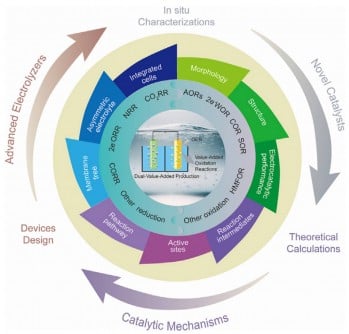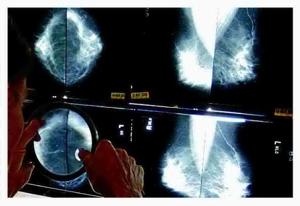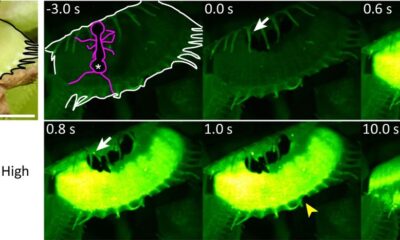Top Stories
Breakthrough in Electrolysis: New Dual-Value Systems Revealed

URGENT UPDATE: A groundbreaking study has just been published revealing a revolutionary approach to sustainable energy and chemical production. Researchers from Jiangsu University, the Chinese Academy of Sciences, Hasselt University, and MIT have unveiled integrated electrosynthesis systems that could dramatically reduce carbon emissions and boost efficiency in renewable energy applications.
This comprehensive review, published online in eScience in July 2025, addresses the urgent need for innovative solutions to the fossil fuel dependency that currently drives over 80% of global energy consumption. With climate change at the forefront of public concern, the study offers a clear roadmap toward achieving dual benefits—clean fuels and valuable chemical products.
The researchers have identified that traditional electrochemical processes suffer from inefficiencies, particularly in the oxygen evolution reaction (OER), which hampers productivity and increases costs. By replacing OER with alternative oxidation reactions, such as methanol and glycerol oxidation, these new systems can enhance efficiency and produce valuable by-products like formic acid and hydrogen peroxide.
Professors Zhenhai Wen, Hao Zhang, and Nianjun Yang emphasized the significance of this shift, stating,
“Electrochemical systems that simultaneously produce two valuable outputs represent a paradigm shift for green chemistry.”
This innovative approach is essential for reducing energy barriers and generating high-value chemicals alongside clean fuels.
The review also highlights essential advancements in catalyst development, including nanostructured materials that have expanded active sites and improved selectivity. New technologies like self-supported and gas-diffusion electrodes are enhancing stability and conversion rates, making them viable for industrial-scale applications.
Additionally, hybrid electrolyzers are evolving from traditional H-type cells to flow cells and membrane electrode assemblies, enabling higher current densities crucial for large-scale manufacturing. The use of advanced in situ techniques—such as infrared and Raman spectroscopy—allows real-time monitoring of catalytic processes, further optimizing reaction pathways.
The implications of this research extend far beyond laboratory boundaries. The development of dual-value electrosynthesis systems not only targets climate change but also aims to produce green hydrogen, fuels, fertilizers, and essential chemical feedstocks cost-effectively. This dual-output capability can lead to significant economic and ecological benefits by coupling reactions like CO2 reduction with waste remediation.
The research, funded by multiple institutions including the National Natural Science Foundation of China, underscores a pivotal moment in the transition to a low-carbon chemical industry. The integration of advanced catalysts, computational design, and scalable electrolyzers presents unprecedented opportunities for sustainable industrial practices.
As the world pushes toward net-zero emissions targets, this breakthrough could redefine how industries approach energy and resource challenges. Stay tuned for further developments as this story unfolds, marking a significant milestone in the pursuit of a sustainable future.
For more information, refer to the original study published in eScience: DOI: 10.1016/j.esci.2024.100333.
-

 Science1 week ago
Science1 week agoMoon Phase Update: What to Expect on October 18 and Beyond
-

 Politics7 days ago
Politics7 days agoIsrael Keeps Rafah Crossing Closed Amid Hostage Negotiations
-

 Science1 week ago
Science1 week agoBackblaze Reveals HDD Durability Insights, Shaping Data Center Strategies
-

 Health1 week ago
Health1 week agoCommunity Mourns Passing of Beloved Educator Mary Ingleby
-

 Health1 week ago
Health1 week agoEarly Mammograms Boost Breast Cancer Survival Rates Globally
-

 Science6 days ago
Science6 days agoNew Research Uncovers Mechanism Behind Venus Flytrap Sensitivity
-

 Lifestyle1 week ago
Lifestyle1 week agoUSC Rossier Honors Mary Andres for 25 Years of Impact
-

 Politics1 week ago
Politics1 week agoPrince Andrew Steps Back from Royal Titles After Epstein Fallout
-

 World1 week ago
World1 week agoFact Check: Viral Quote Misattributed to Released Israeli Prisoner
-

 Sports1 week ago
Sports1 week agoSaquon Barkley Reacts to James Franklin’s Dismissal from Penn State
-

 Politics1 week ago
Politics1 week agoNavy Veteran Max Quattromani Launches Campaign for Assessor Seat
-

 World1 week ago
World1 week agoNevada Treasury Awards Four Students the 2025 Kenny C. Guinn Scholarship









